Luxor is full of Ancient Egyptian sites. Really, really full. There’s so much ancient stuff here that it would take weeks (months?) to see it all just one time. Historically, the ancients built their city of Thebes (later Luxor) on the eastern bank of the Nile. To the ancients, the East was the side of the living, while the West was the side of the dead. On the West we find the great mortuary temples and the tombs. On the east, the temples that were used for day to day worship.
Typical luxor street
Roof tops – unfinished to avoid paying the steep construction tax
The East Bank
Karnak Temple
Entry was 65£ Egyptian per person ($11 CAD). It’s massively impressive, as in really big and full of cool stuff. It houses many obelisks, many more statues, covered temples, a huge columned hall, carved walls, and even an artificial lake. Just about every surface was originally covered with detailed carvings and hieroglyphics. Original colour can still be seen in many places where the stone managed to avoid direct sunlight. Unfortunately, almost everything you see has been badly damaged at one point or another. The temple is mostly a recreation made from a conglomerate of concrete and the original stones that managed to survive the ages. The good news is that the restoration was very well done. I think, given the options of displaying a field of crumbled blocks or a rebuilt temple like they have today, they made the right choice.
One interesting thing that holds true for just about all of the temples in Egypt was the presence of official scammers/beggars. These guys would wear a uniform and sport a set of keys. Invariably, they would come after you while you were off by yourself. They’d usually signal you to stay quiet and beckon you over to a locked door. Pretending that he’d be in trouble if he were caught, he’d look all around while getting you to hide behind some blocks. Finally he’d quickly unlock the door and usher you inside. Nothing more than charades designed to squeeze a bit more money from the unwary tourist. We found that if we clearly said “La Baksheesh” (no tips) up front, we would still get the “secret” tour but wouldn’t have to part with our cash after it was done.
Karnak Temple
Karnak Temple
Kissing by the butts (in one of those “secret tour” areas
Obelisk
A classic shot
Rams
Playing with Sepia
Luxor Temple
Luxor Temple is the smaller of the two and is highly accessible. By this I mean that there are no “block out fences”, and the temple complex is surrounded by roads. This meant that we were free to walk completely around the perimeter and get a surprisingly good glimpse of the temple without paying the steep entrance fee. Unfortunately, it’s located at a hot-spot for horse and carriage drivers. If you want to “enjoy” seeing the temple, you are probably best off to purchase a ticket, get off the street, and view it from inside.
Luxor Temple
Luxor Temple
The West Bank
Our original plan was to spend a few days renting bicycles and try to see as many of the West Bank sites as we could. I still think this would be a reasonably good way to see the West Bank, but we didn’t get the chance to try. Instead, we relented into taking a tour. It was paid for by the hotel we had booked our felucca tour through in Aswan. They did this because we threatened to go to the tourist police and complain about how our felucca tour abruptly ended leaving us stranded in the wrong city, without taking us to the two temple sites that were on the itinerary. Thus, our tour was free, but we did have to pay our own entrance fees which amounted to 150£ each ($25 CAD).
The tour included an English guide, transportation to the Colossi of Memnon, the mortuary temple of Hatchepsut, the Valley of the Kings, Medinet Habu Temple, and a mandatory shopping stop. Unlike the East Bank sites, the West Bank sites are in a very good state of preservation. I rate the tour quite highly, but it could be improved quite a bit by exchanging the hour long shopping stop for a lunch break.
Valley of the Kings
Not all the tombs are officially opened. Supposedly, the humidity from the breath of visitors causes damage to the decorated stuccoes. To solve the problem, the tombs are on a steady rotation giving them time to recuperate. On any given day, only a half dozen tombs are open to the public.
Interestingly, the entry ticket does not give you free run of the tombs. Your ticket only buys you entrance into three tombs.
The three tombs that we saw were very interesting, and totally worth seeing. The tombs were constructed for the duration of the pharaoh’s reign. Thus, you could tell how long the pharaoh had ruled for by measuring the length of his tomb. And they were long. Even the shorter tombs that we were in didn’t seem short. The walls and ceilings were covered in smooth white stucco which was covered from floor to ceiling by various paintings and writings. The artwork had a general theme. According to our guide they depicted scenes and prayers from the Book of the Dead which would help guide the deceased pharaoh during the first few days of the afterlife.
The tombs were also very similar. After seeing three of the tombs, I didn’t feel like I really needed to see a fourth, so the ticketing scheme seems to be okay in my opinion. Besides, there’s always the not-so-secret system of bribery if you want to see more tombs. We didn’t pay any bribes, so we don’t know exactly what the prices are, but we saw a lot of money changing hands between the tomb guards at the entrance and the throngs of tourists entering.
Here’s a basic run down of what you can get with a bribe:
- Entry into a tomb after you’ve used up your three entrances
- Permission to take photos (normally cameras are not allowed inside the complex)
- Entry into one of the sealed, not-for-the-public, undergoing-restoration tombs
- Permission to chisel off a large piece of painted plaster from the tomb wall as a take home memento. Crocodile paintings seemed to be especially popular.
Hatchepsut (a.k.a. “Hot Chicken Soup” Temple)
This three story complex was used as a stage for Verdi’s opera Aida in modern times. That all came to an end after a terrorist attack in 1997. Gunmen stormed the complex and shot and killed at least 70 people. Since then, there hasn’t been much trouble.
Hatshepsut Temple
Hatshepsut Temple
Medinet Habu
This was my favourite temple near Luxor. It was unique, having very deep carvings. And, there were very few tourists to get in the way of photos.
Medinet Habu – Deep carvings
Medinet Habu
Colossi of Memnon
A quick photo stop.
Colossi
Colossi
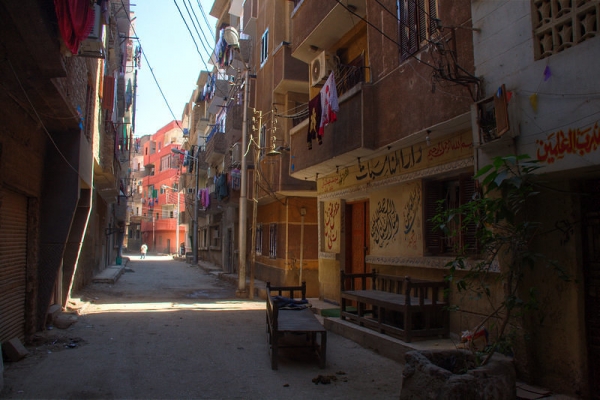
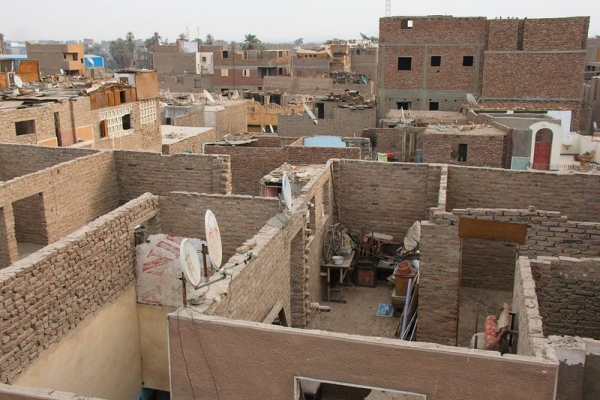
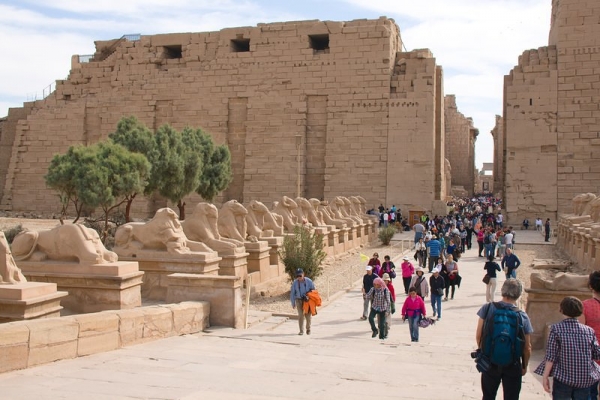
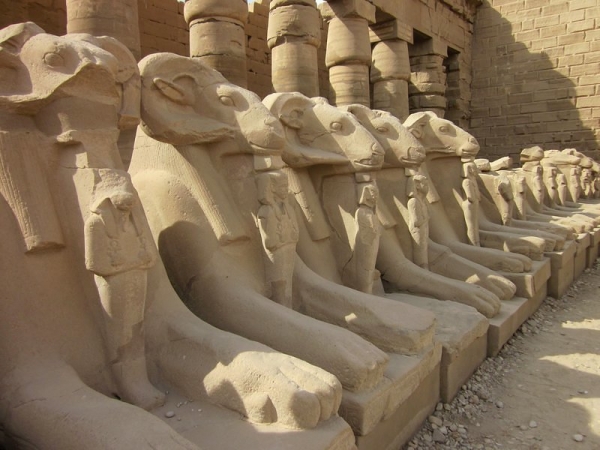
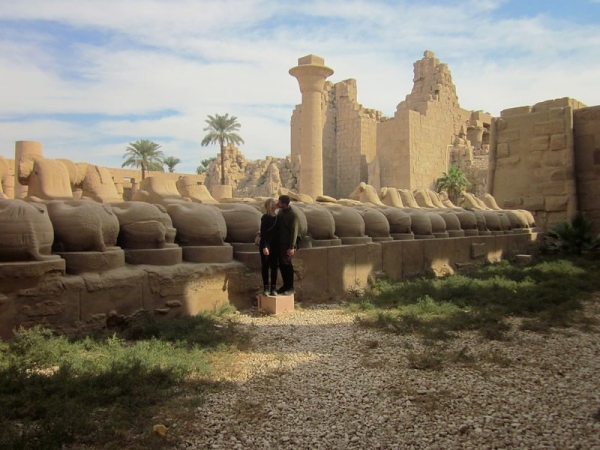
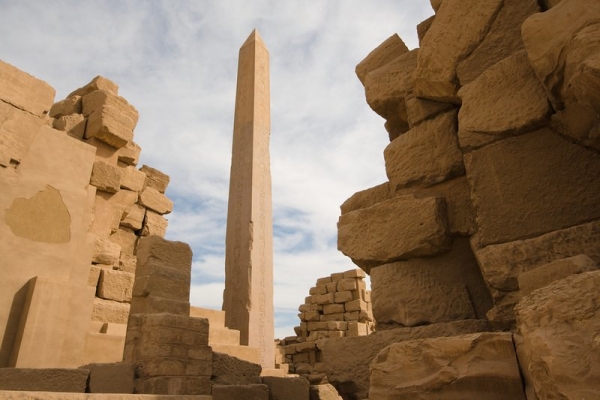
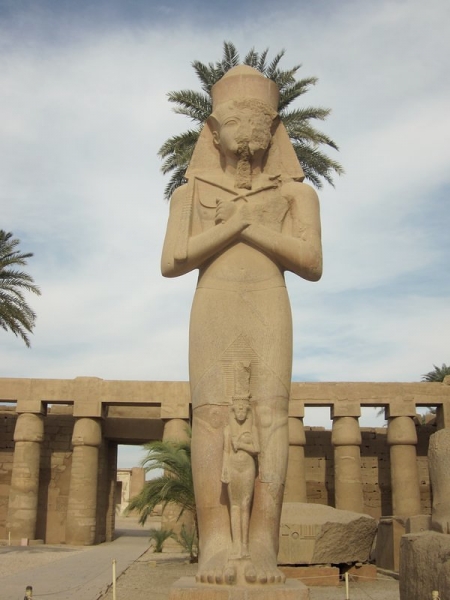
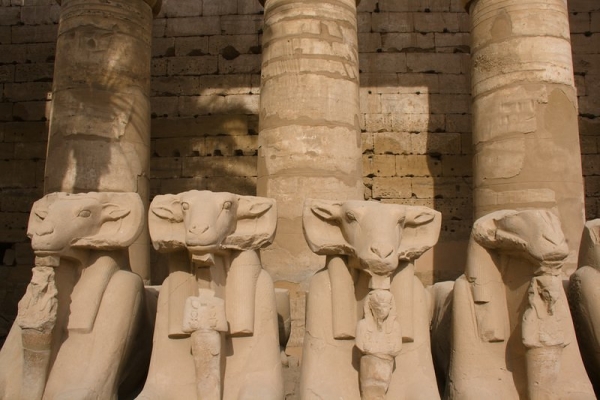
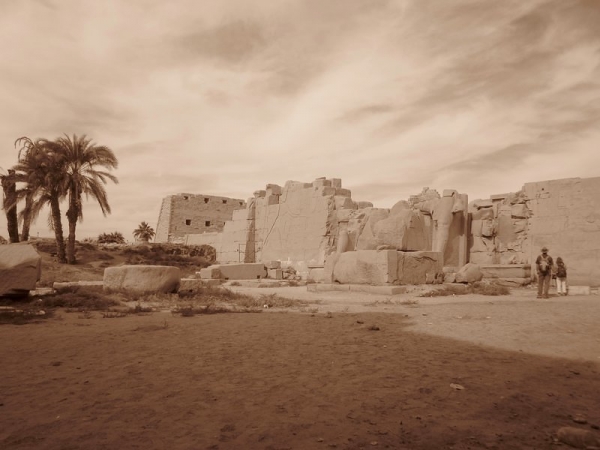
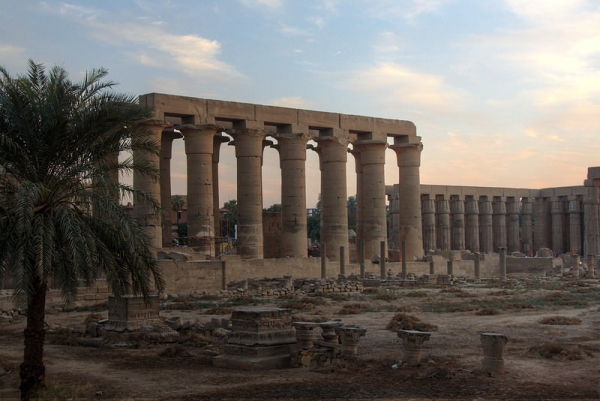
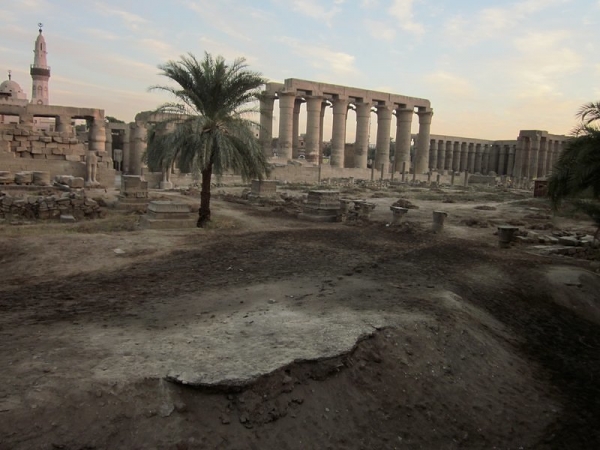
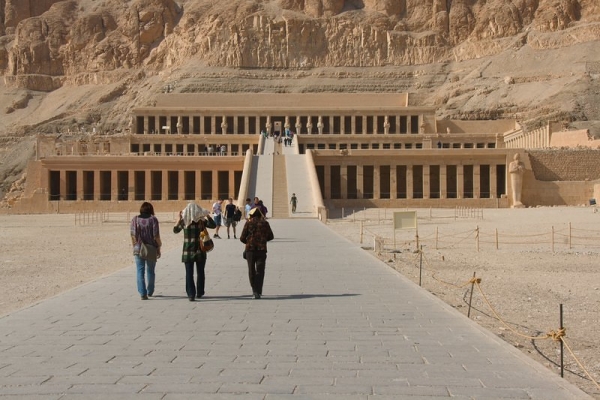
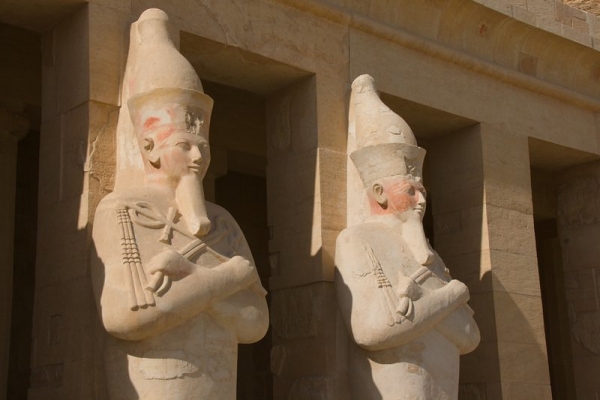
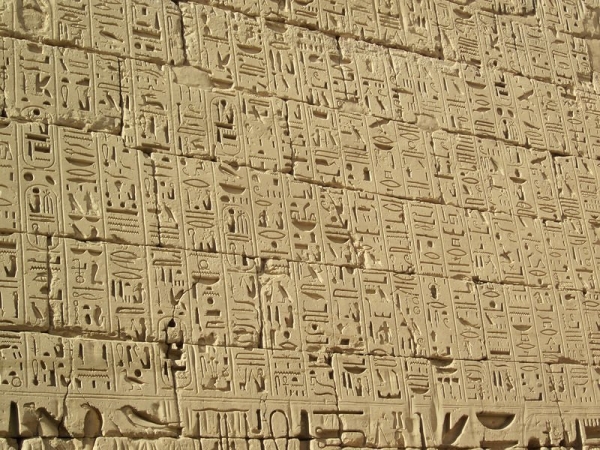
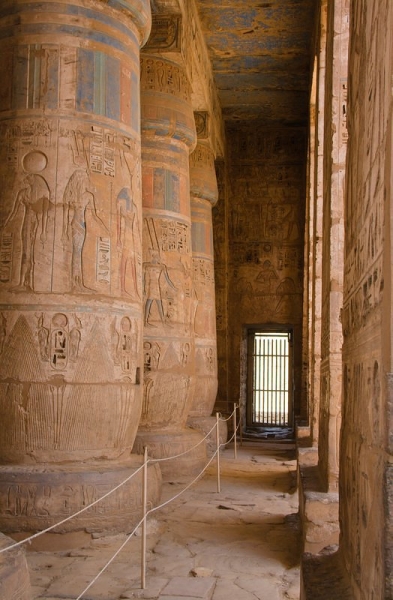
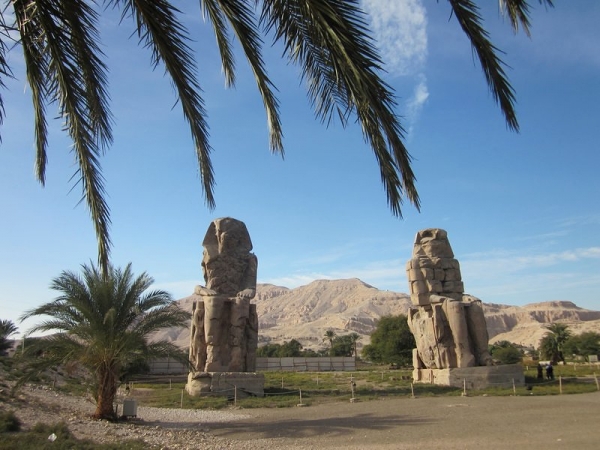
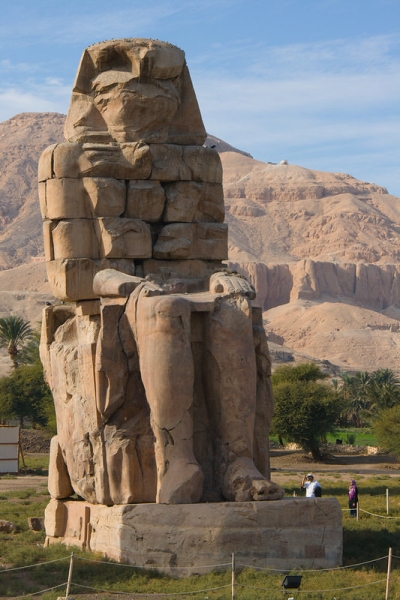





Seriously…people were allowed to chisel off pieces of the tomb as a souvenir??? Awful. thanks for all the blogs. Great photos, too.
Not while we were there, but we did see the chiselled out remains of what used to be a nice crocodile painting.
I have no idea how recently it was removed, but I did get the distinct impression that anything goes with a big enough bribe.
Great photos. Really want to go explore Egypt. That sucks that people could take “souvenir” pieces of artifacts like that… sad to destroy such history like that!
I’m not sure how often it occurs, but well chiselled proof is left missing from the wall. There’s a good chance that some of these thefts were done in ancient times as well, I hope most modern day tourists appreciate what they are seeing, and appreciate that everyone else should have the chance to see it to.
But, unfortunately the impression I got was that you could still take something home today if you had enough money.